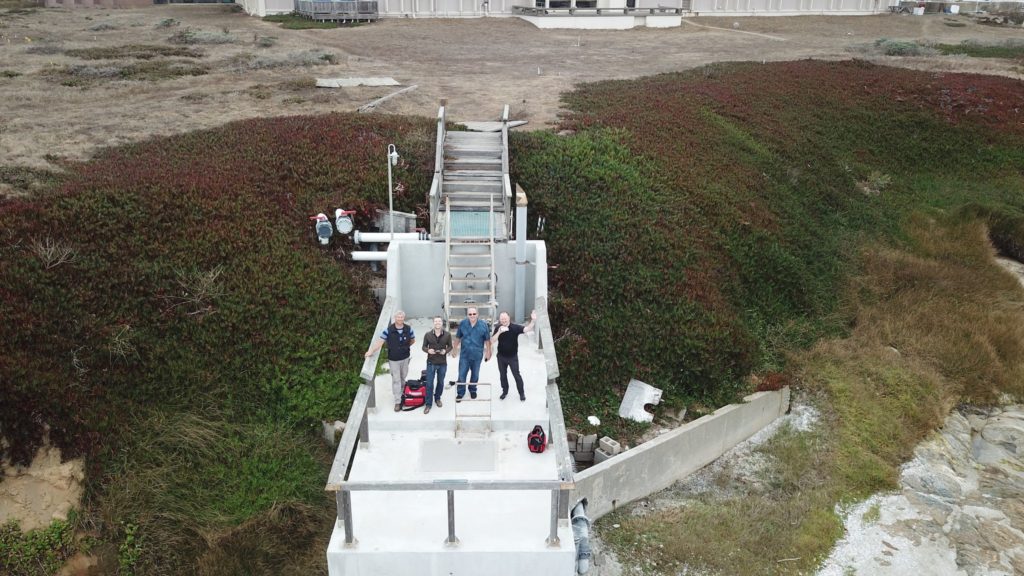TL;DR; The Safecast realtime seawater radiation sensor at Bodega Bay, CA, has been repaired. The realtime feed is here. For more details, read on!
Though ocean scientists have been monitoring the levels of radionuclides in the ocean for decades, this took on a renewed urgency following the Fukushima accident. The radiation released into the Pacific Ocean by the accident has spread as an ocean plume (see our blog post from 2014 describing what scientists expected to happen), and has reached the West Coast of North America. Recent research indicates that the levels of Fukushima-derived radionuclides are similar to what was measured in the Pacific in the 1970s, following years of nuclear weapons testing. While this is good news to people who feared much worse, it’s still significant and can’t be dismissed as a concern. Though no great damage to Pacific marine life is expected from these levels, few experts believe enough monitoring is being done, and researchers continue to struggle for funding. Safecast is happy to play a part in the long-term monitoring of Pacific radiation.
Seawater is very harsh on electronics. The Safecast radiation sensor that was installed in 2015 at the Bodega Marine Lab in California failed in early 2017 due to water infiltration, leaving us without the only seawater monitoring station in the Safecast network.
In their own words, “The University of California, Davis Bodega Marine Laboratory (BML) is dedicated to understanding environmental processes at the land-sea interface on California’s North Coast – an area known for the productivity and diversity of its marine and terrestrial ecosystems.”
Safecast was lucky enough to be invited to install a fixed radiation sensor at the location where BML measures many parameters of the seawater that is constantly pumped to feed the lab. Similarly to Safecast, all the data measured by those other sensors is also available online at the Bodega Ocean Observing Node page. This location is especially good because it measures pure seawater right as it comes out of the collection point located several hundred meters off the coast.
On Saturday, September 9th, 2017, Pieter Franken, Dan Sythe and I had an opportunity to visit the BML to install a replacement for the seawater radiation sensor with a brand new sensor built by Safecast volunteer Kent Noonan. International Medcom donated all the sensor hardware and a lot of time to the project, many thanks to them for making all this possible!
Many thanks as well to Linda Speel for her work developing the project with the Lab and her commitment to the simultaneous and supplemental ocean sampling project at Bodega Head with Woods Hole Oceanographic Institute
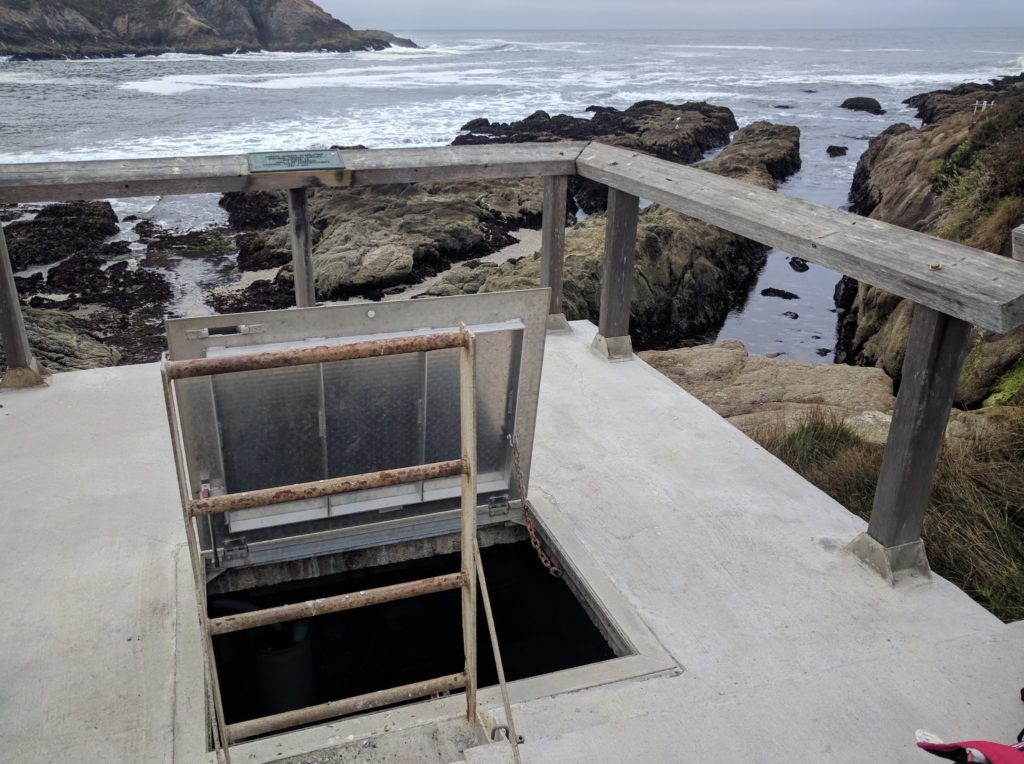
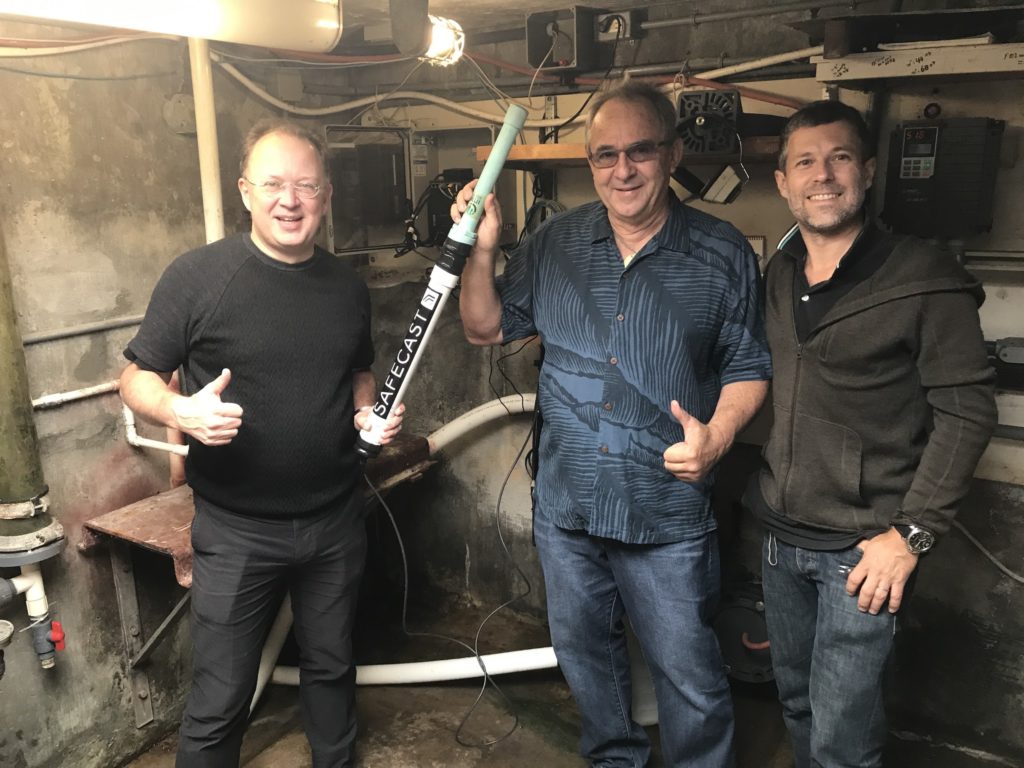
We were welcomed by Phillip L. Smith, the superintendent of the laboratory, who gave us access to the pumping station. The Safecast radiation sensor uses an LND 78017 GM-tube gamma detector. This is a large, sensitive sensor about 10 inches (27cm) long, which has been carefully sealed inside a PVC tube. It fits inside a special bucket which maintains a constant water flow, which it shares with several other sensors. The Safecast sensor is connected to the network using a Wizkers.io box designed by Ed, which forwards all the data directly to the Safecast API as well as an experimental realtime feed – a sort of Pointcast without a display, if you will. (Note that the “temp” reading on the Dweet feed is the CPU temperature, not ambient radiation.)
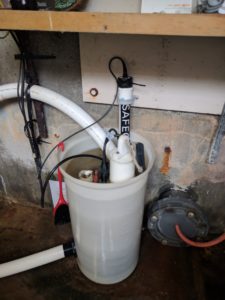 |
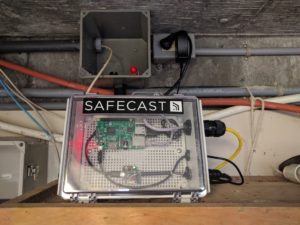 |
You can new follow the real time as well as historical readings of the new sensor on the Safecast Realtime site.
Phillip then gave us a wonderful tour of the BML facilities where we got a glimpse of all the programs going on, quite a lot of impressive research is done there. Thanks again for all your time and help, Phillip!
Dan and I both live not too far from Bodega Bay and will be monitoring the sensor closely to check how it is doing in the marine environment over the next couple of months.
